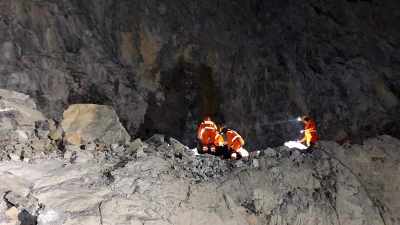📣 For more lifestyle news, click here to join our WhatsApp Channel and also follow us on Instagram
10 of the slowest animals in the world
These animals prove that being slow doesn’t mean being weak. In fact, their leisurely pace helps them survive, whether by avoiding predators, conserving energy, or blending into their surroundings
 Discover nature’s slowest animals (file)
Discover nature’s slowest animals (file)In the wild, you might think speed is everything. But for some creatures, slow and steady is a survival strategy.
From sleepy tree-huggers to sea creatures that hardly move at all, these animals have turned slowness into an art form. And believe it or not, their slow pace often works in their favour.
Let’s take a closer (and slower) look at some of nature’s most leisurely movers.
Sloths
Sloths are pretty much the poster animals for slow living. They move so slowly that algae grows on their fur, a neat little camouflage trick that helps them blend into the trees.
With a top speed of just 0.15 miles per hour, sloths spend most of their lives hanging upside down, sleeping up to 15 hours a day. Their low-energy diet of leaves means they have little choice but to take life at a leisurely pace.
Snails
Snails glide on a trail of mucus, moving at a pace of about 0.03 miles per hour. They’re built for slow travel, with their muscular “foot” helping them move ever so gently across surfaces.
Sure, they might not win any races, but they’re perfectly designed for their way of life.
Giant tortoises
With their hefty shells and lumbering steps, giant tortoises aren’t exactly in a hurry.
The Galápagos tortoise, for example, ambles along at around 0.2 miles per hour. They’ve been known to live well over a century, so maybe they’re onto something with their slow-and-steady lifestyle.
Starfish
Watching a starfish move is like watching time stand still. They shuffle along the ocean floor using tiny tube feet, creeping at a pace of about 0.09 miles per hour. It’s slow going, but in the underwater world of coral reefs, there’s no rush.
 Watching a starfish move is like watching time stand still. (Source: Freepik)
Watching a starfish move is like watching time stand still. (Source: Freepik)
Banana slugs
Bright yellow and endlessly slimy, banana slugs crawl through the forest at a crawl, just a few inches per minute. These critters might be slow, but they play a big role in their ecosystem, breaking down dead plant matter and recycling nutrients back into the soil.
Seahorses
Seahorses aren’t exactly built for speed. They float along at around 0.01 miles per hour, often clinging to seaweed with their tails to avoid drifting off. Their slow movement helps them stay hidden from predators in the underwater world.
Sea Anemones
If you blink, you’ll miss it. Actually, even if you stare, you’ll probably miss it. Sea anemones are among the slowest movers on Earth, shifting less than one centimeter per hour. Most of the time, they just stay put, waiting for prey to come to them.
Koalas
Koalas have made a lifestyle out of taking it easy. They sleep up to 16 hours a day and move at a gentle pace of about 0.2 miles per hour. With a diet of low-energy eucalyptus leaves, slow is just their natural rhythm.
Slow loris
Moving slowly is more than just being lazy; it’s a survival tactic. The slow loris creeps along branches at a careful pace, making it harder for predators to spot. They’re nocturnal, deliberate, and never in a rush.
Gila Monster
This venomous lizard might sound dangerous, but it’s in no hurry to get anywhere. The Gila monster moves at a crawl, conserving energy in its hot, arid habitat. Its slow movement suits its lifestyle perfectly.
These animals prove that being slow doesn’t mean being weak. In fact, their leisurely pace helps them survive, whether by avoiding predators, conserving energy, or blending into their surroundings. Sometimes in nature, taking it slow is precisely what keeps you alive.
📣 For more lifestyle news, click here to join our WhatsApp Channel and also follow us on Instagram





- 01
- 02
- 03
- 04
- 05






















